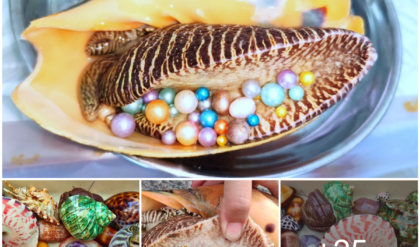For centuries, flowers have held a special place as a representation of nature’s exquisite beauty. While we all appreciate the charm of traditional blossoms, let’s not forget that Mother Nature has a knack for creating extraordinary and peculiar flowers that continue to captivate us.

The enormous corpse flower holds the title for being the biggest flower found on our planet. Its distinct scent, reminiscent of decaying flesh, acts as a powerful attractant for the deceased flies that play a crucial role as pollinators. These magnificent flowers are predominantly found in the beautiful Indonesian province of Sumatra. More specifically, they thrive in the Sumatran region, showcasing their gigantic stature, with heights reaching up to 3.1 meters and weighing a staggering 91 kilograms.

When the sea sesame buds are in full bloom, they resemble delightful flowers, evoking feelings of joy. It is a familiar sight along the shores of the Pacific and Indian Oceans. These blooms emit a captivating scent that attracts moths and bats, offering a delightful experience for the senses.

Heart flowers are commonly known as “bleeding hearts” due to their striking resemblance to a broken heart oozing with blood. These captivating blooms have been associated with countless tales of sorrowful love, lending an air of mystery to their origin. Upon closer inspection, the dazzling hearts that adorn this flower shimmer beautifully under the warm embrace of sunlight. However, upon further examination, one can discern the intricate details of a shattered heart, sprouting forth crimson streams of blood.

The blue tiger claw flower, a plant endemic to the tropical rainforests of the Philippines, boasts a sturdy and long-lasting woody stem. It is commonly cultivated in the vine-like manner, adorning trellises with its sprawling growth. Interestingly, its inflorescences have the astonishing ability to reach lengths of up to 3 meters.

The corpse flower holds the title for being the largest unisexual blossom on Earth. However, its unfortunate characteristic is the foul scent resembling decaying flesh. Uniquely, this flower lacks both leaves and stems, yet can magnificently stretch its width to an impressive 1 meter. Thriving exclusively in the Southeast Asian islands of Sumatra and Borneo, these remarkable flowers can only be found at elevations surpassing 1000 meters above sea level.

The pitcher plant, also referred to as the lure-trapper plant or the insect-trapper plant, is a type of flesh-eating vegetation found in tropical regions. It possesses a delightful nectar within its structure, alluring not only insects but also creatures such as rodents and tiny avian creatures.

The water hyacinth is a member of the flycatcher family as well. Unlike traditional flowers with petals, this unique flower has a flat shape and features sticky plumage adorned with shimmering beads on its surface, giving it the appearance of a dazzling firework display. The glistening effect, resembling dewdrops in sunlight, serves as a clever tactic to allure and ensnare insects.

Do not be deceived by the adorable appearance of this charming white bunny. In reality, rabbit ears are actually flesh-eating plants, known as carnivorous plants. They have earned the nickname ‘deadly rabbits’ due to their ability to ensnare and devour minuscule insects.

The bat-faced flower, a unique plant species originating from Mexico, possesses a striking resemblance to the fierce bat creature. Its captivating presence is characterized by vibrant red and purple hues, earning it other delightful monikers such as “rabbit ears” and “cigar flowers”. Not only does this exceptional flower withstand severe weather conditions with ease, but it also showcases an impressive resilience against drought and high temperatures. Radiating an irresistible allure, the bat-faced flower entices the enchanting presence of hummingbirds, bees, and butterflies to its show-stopping colors.

Sea holly blossoms boast mesmerizing icy tones, with their distinctively dark green petals and shimmering silver sepals. These exquisite flowers flourish graciously along the pristine beaches and enchanting dunes that grace the English coast. The sea holly’s distinctive and rare beauty is unparalleled among blooms.

Found in the southeastern part of Ecuador and near the border of Peru, there exists an extraordinary flower known as the Monkey-Faced Orchid, scientifically referred to as Orchis simia. The mesmerizing composition of its petals, consisting of sepals, petals, and ebony-hued petals intricately arranged to resemble a mischievous monkey, or more specifically, a spirited baboon. Interestingly, it has been unveiled that each petal exudes a delightful fragrance reminiscent of a succulent, fully ripe orange.

The rare black bat flower thrives in the tropical regions of Southeast Asia. This remarkable flower, resembling a bat, is also referred to by chilling names such as devil flower, lobster beard flower, and black cat flower.

The parrot beak flower, once abundant in the wild, is now believed to be completely extinct. Although there are some individuals who hold onto the hope of its existence, scientific experiments attempting to pollinate and reintroduce this flower into its natural habitat have mostly resulted in failure. Consequently, the cultivation and propagation of parrot beak flowers are exclusively limited to controlled laboratory environments.

The enchanting scent of parrot flowers is an exquisite phenomenon exclusive to the captivating regions of Thailand and Manipur, India. These remarkable blooms hold the title of being endangered, rendering them strictly forbidden to leave the boundaries of their home countries.

This remarkable tree, known as Bach Lan or Gam Angola in Vietnamese, stands out as both the most hideous and forlorn tree in the world. Its withered and tattered exterior paints a picture of a tree on the brink of a slow demise.

This unique flower possesses an intriguing quality – its appearance transforms from a stunning, vibrant blossom to a striking resemblance of a human skull as it dries. Commonly found across North Africa and Europe, these flowers enchant observers with their dual aesthetic.

Flying duck orchids, also called as such due to their resemblance to ducks preparing for flight, can be predominantly found in Australia. These exquisite blooms possess a distinctive shape that makes pollination a seamless process.

The Italica orchid, found in the Mediterranean area, is commonly found in soils with low nutrient content. This unique flower is also often referred to as the “naked man orchid” due to its distinct petal shape.





